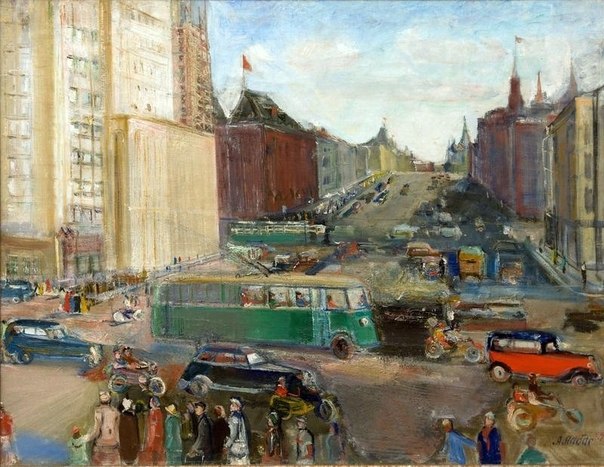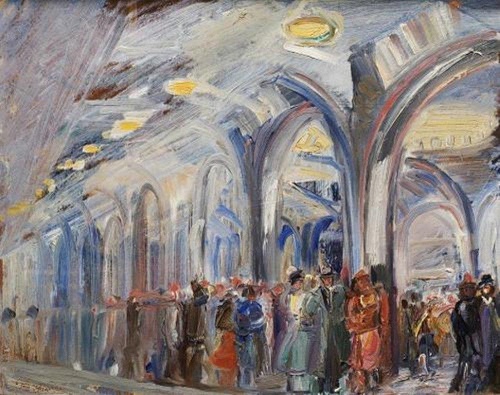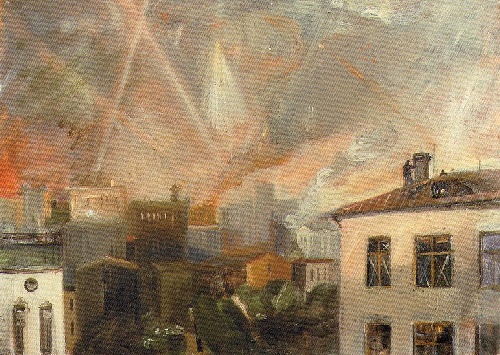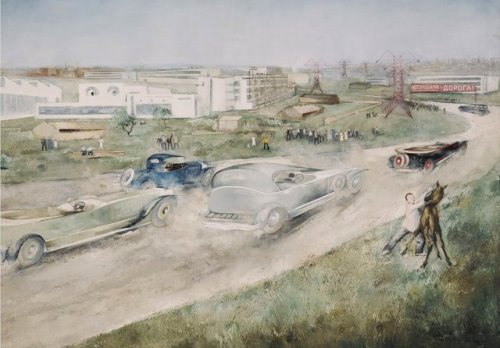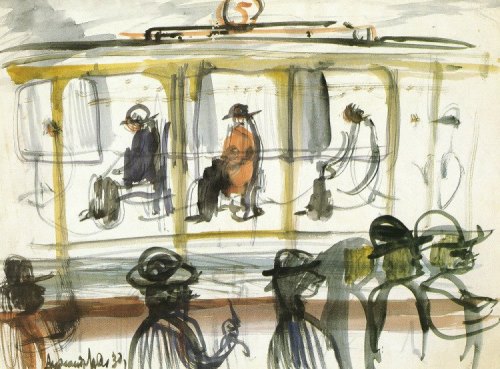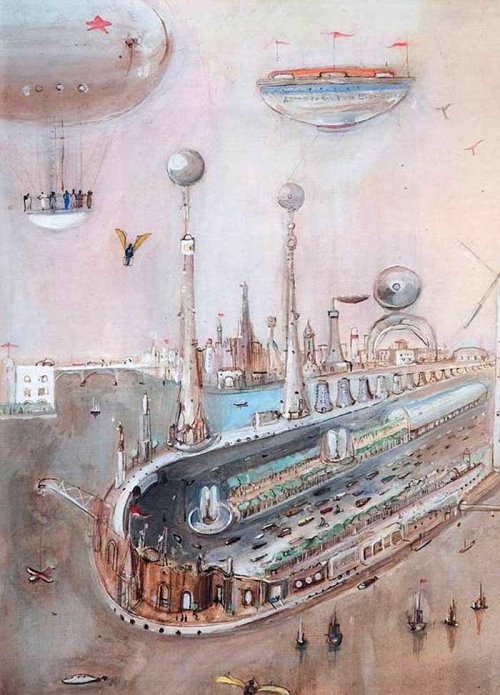Soviet avant-garde artist Alexander Labas 1900-1983

Sailor. 1930. Sketch from the series’ October in Petrograd.’ Canvas, oil. State Tretyakov Gallery. Soviet avant-garde artist Alexander Labas 1900-1983
Soviet avant-garde artist Alexander Labas entered the history of Soviet art as a romantic, praising the wonders of machinery of the young state. Indeed, everything at the time seemed marvelous, illuminated by bright sunshine and subservient to the power of the mind. Thus appeared the progress in the paintings of the artist, and in the best Soviet poetry. Undoubtedly, the main themes in the paintings of Labas – speed, movement and technical perfection.
According to biography of Alexander Labas, he studied at the Imperial Stroganov School of Industrial Art in the studio of F. Rerberg, then in the studio of I. Mashkov. Since 1917 he continued his studies at the State Art Studios (VHUTEMAS) in the workshops of F. Malyavin, Konchalovsky, Kazimir Malevich, Kandinsky, P. Kuznetsov, K. Istomin, and A. Lentulov. However, the same as many of his colleagues of the time, served as the artist of the 3rd Army of the Eastern Front (1919). Then, at the invitation of V. Favorsky taught painting and chromatics in the All-Union State art workshops (since 1924). In 1920 – 1930-ies engaged in stage design of performances at the Theater of the Revolution, named after VF Komissarzhevskaya and the State Jewish Theater (GOSET). In addition, Alexander Labas made panoramas and dioramas for the Soviet pavilion at the World Exhibition in Paris (1937), and the World’s Fair in New York (1939), as well as for the Main Pavilion of All-Union Agricultural Exhibition (1938-1941). Alexander Labas – one of the founding members of the OST (Society of Easel Artists).

Arrival of Lenin in Petrograd. 1930. From the series ‘October’. Oil on canvas. Tretyakov gallery. Soviet avant-garde artist Alexander Labas
“What I am sure of is that with each decade my work will be more and more apparent, well, in 50 or 100 years, … and people will be able to understand the very complex phenomena of our stunning twentieth century. I was born with amazing accuracy in time, and this century fits me like no other. ”
He was born in Smolensk, on February 19 (March 3) 1900 in the family editor and publisher. In 1910 the family moved to Riga, and in 1912 – to Moscow. In 1912-1917 he studied at the Stroganov School of Industrial Art, where his main mentor was F. Fedorovsky. He attended also workshop of I. Mashkov (1916) and the Free Art Studios (1917), where he studied in the studio of Pyotr Konchalovsky.
Early experiments in figurative art (Color composition Oval, 1920-1921, Tretyakov Gallery), Constructivism, organically assimilated in years of study and teaching (1924-1929) in the Higher Art – all this left its mark on the tone of the avant-garde art of Labas. His style – a kind of post-futuristic expressionism.
“By analyzing art, – Labas wrote in his diary, – I come to the conclusion that it combines the two lines – the eastern and European. East – it’s hereditary, from time immemorial, and it is visible in the appearance of dark hair, dark eyes, and the southern temperament of man”.
With all the love of the West, being associated with it professionally, Labas believed that both of these parts are equal. However, he paid more attention to the East: “We, Southerners highly developed imagination and a penchant for poetry, symbolism, abstraction from the real everyday situation. It was the Egyptians in ancient Israel. The desire for philosophical generalization, and the ability to see the inner vision was the basis of their creativity. And I fully inherited these properties. … ”

